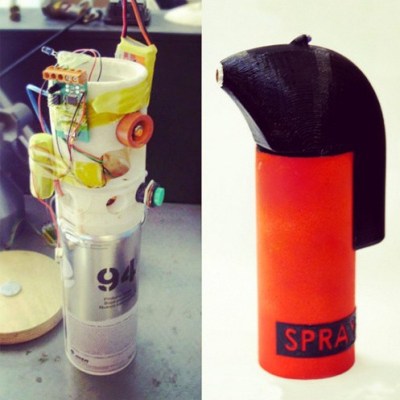SprayPrinter is a neat idea. You download a cellphone app, point the camera at a wall, and sweep the wall with a spray can fitted with a (Bluetooth? WiFi?) remote-controlled valve. The phone knows where the nozzle is, and sprays a dot whenever it needs to “paint” the picture of your choosing on the wall.
 While we’re not sure that we have the patience to paint our walls this way, it’s a cool effect. But even more, we love the idea of using the cellphone camera for location sensing. Many robotics applications do just this with an overhead camera.
While we’re not sure that we have the patience to paint our walls this way, it’s a cool effect. But even more, we love the idea of using the cellphone camera for location sensing. Many robotics applications do just this with an overhead camera.
Of course, we’d love more detail about how it’s done, but it’s not hard to guess that it’s either a bit of machine vision in the phone, or simpler still, that the spray-can housing has IR LEDs inside that the phone can lock onto. Indeed, the prototype version of the product shown here does look like it has an LED on the opposite side from the orange nozzle.
It wouldn’t be hard to take this to the next level, by adding enough IR LEDs that the camera in your phone can sense orientation as well as location. Heck, by measuring the distances between LEDs, you could probably even get a rough measure of depth. This could open up the use of different nozzles.
Thanks [Itay] for the tip! Some images courtesy SprayPrinter, via designboom.












